Moving house can be stressful for all, especially your cat.
Here, we look at the most important things to remember, and how good planning can make moving house trouble-free for you and your feline family members.
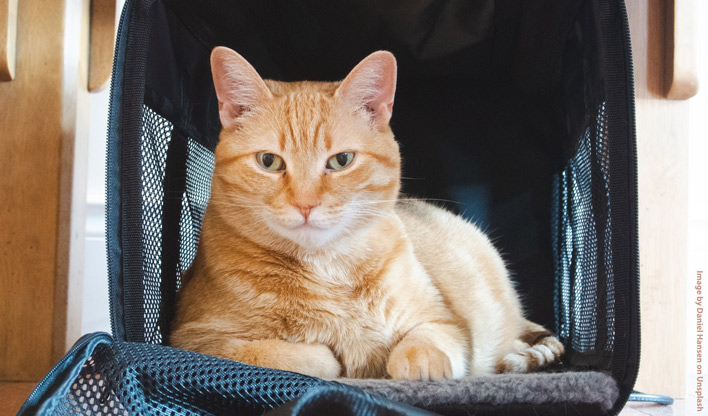
Research has shown that moving house is one of the most stressful things you can do, even more so than having a child or going through a breakup. Imagine then, that you are settled and comfortable in your home and one day you are picked up and taken somewhere brand new without warning. That’s what moving house feels like to your cat!
So, we’ve put together some tips to help you plan a worry-free move and (hopefully) make it easier for the feline members of your family too. Simply having a plan in place will make moving house with a cat a much smoother process.
Update Microchip Details
One of the most important things to remember before you move house, is to check that the contact details are correct on your cat’s microchip record, particularly your mobile phone number. Also, make sure to let the microchip registration company know your new address. If you don't know which database holds your details, use the 'Check a chip' facility on identibase.co.uk
Even if you take every precaution not to let your cat out too soon at your new home, there is always that small chance that they may wander too far in unfamiliar surroundings.
Every day, rescue centres across the country take in ‘stray’ cats with microchips, but are unable to contact the owner as the microchip record is out of date. So if the worst should happen and your cat goes missing, it is vital that you are contactable.
Use a Cattery
With people, boxes and furniture going in and out of your old and new house during the move, consider using a cattery for a few days either side of moving day. Your cat will be safer there, and you won’t need to worry about them while you have a million other things to think about!
Make sure their vaccinations are up to date well ahead of time, as most catteries won’t take un-vaccinated cats. Not sure how to find the right cattery? Read our tips on choosing a boarding cattery.
Keeping your Cat Calm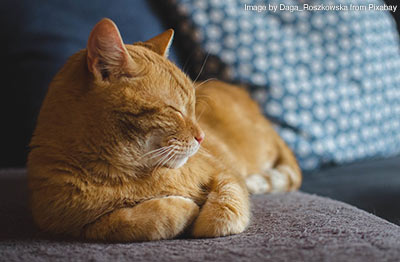
When faced with any major changes such as a house move, it’s always a good idea to consider ways to help keep your cat calm. In the run-up to moving house, and in the weeks that follow, try to stay calm yourself. Cats are sensitive to our emotions and will pick up on any uneasiness.
Cat calming products are also a great idea. Feliway diffusers are a tried and trusted product that mimics the ‘happy’ pheromones that cats produce. Keep one or more diffusers plugged in at your old house in the weeks before you move. When you get to your new house, plug them in as soon as possible so that your cat feels at home from the start.
If it's a long distance to your new house, or you know that your cat doesn’t travel well, speak to your vet in advance. They may be able to recommend something to help keep them calm during the journey.
Place the Carrier out in Advance
This is a great tip for any time you need to put your cat in a carrier. If they only ever associate the carrier with going to the vet, it’s understandable that its presence would be intimidating. So, a couple of weeks before the move, place the carrier out somewhere visible in your house so that your cat sees it as just a normal piece of furniture.
Stick to Routines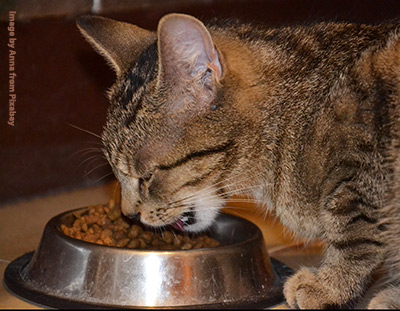
Cats thrive on routine, so you can avoid additional upset by keeping routines as normal as possible. Try to ensure that meals, play sessions and bedtimes are as close to their usual time as you can. This is easier said than done when moving house but to a cat who doesn’t understand what’s going on, dinnertime is still the most important time of the day!
Clean the New House
Cleaning areas at cat height is particularly important if the previous owners had cats or other pets, as your own cat may think that there is a threat at the new property. Cats have a great sense of smell so they will pick up scents that you can’t.
Wipe down areas such as door frames, cat flaps, windowsills and any other areas that previous pets will most likely have been in contact with. Remember, to keep your cats safe from toxic cleaning products.
Find a vet
If you've moved to a new area, find a vet practice near your home and register your cat with the new vet as soon as possible. Your previous veterinary practice will have your pet's records on file digitally, so it's usually a simple process for them to transfer the information over to your new vet.
Prepare a Settling-in Room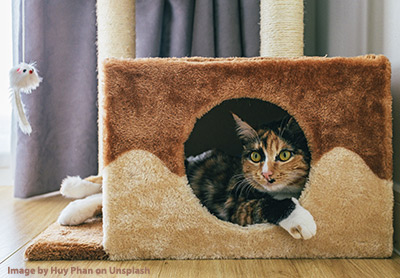
Once you get to your new house it’s important to keep your cat indoors for at least 3 weeks, whilst they get used to it being their home. There are lots of ways to keep your cat entertained indoors.
To help them feel safer sooner, a good plan is to designate a ‘settling-in room’ for your cat, where they can feel secure, and hide if they need to. This is similar to the ‘bonding room’ technique, used for newly adopted cats.
Giving a cat the run of the whole house straight away can be too overwhelming, whereas this enables them to explore their new home gradually.
Prepare the garden
Clear any plants that are toxic to cats such as lilies and foxgloves from your new garden. Cats Protection has a handy list of which plants are poisonous to cats and which are safe. Check that the previous owners haven't left any nasties in the garden, such as slug pellets which are toxic to cats.
Ensure that any water butts have lids on, and that ponds have an easy exit route such as a slope at one end. If required, arrange for adequate cat fencing or a catio area before your cat is allowed outside
Three Weeks Later…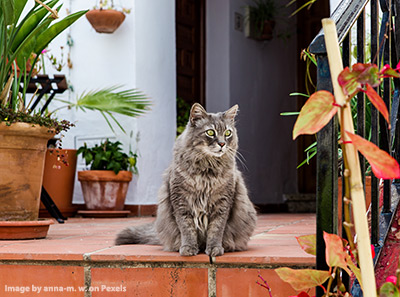
If your cat is to have access to the outdoors, after an initial three weeks indoors, you can carefully start to introduce him to the garden. The first outing should be in the daytime, just before a meal, so that he will want to come in quite soon for food! Stay by the open door whilst he explores the garden, then after a few minutes call him in for his meal. Short outings like this over the next few days, will allow him to become familiar with his new environment.
When your cat is fully settled into his new home, we still advise keeping them indoors at night. This greatly reduces the risk of them getting lost or run over.
We hope these tips will help your move go smoothly. And finally, to make your cat feel really at home... don’t forget to give them plenty of fuss and attention!
Contributor: Ella Street, Cat Chat Blogger
Published: February 2023

